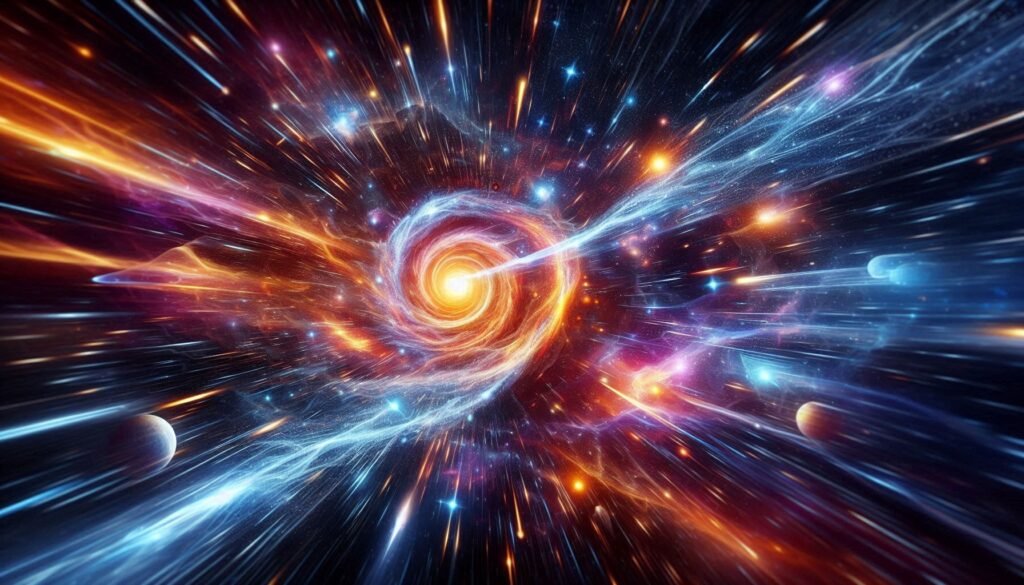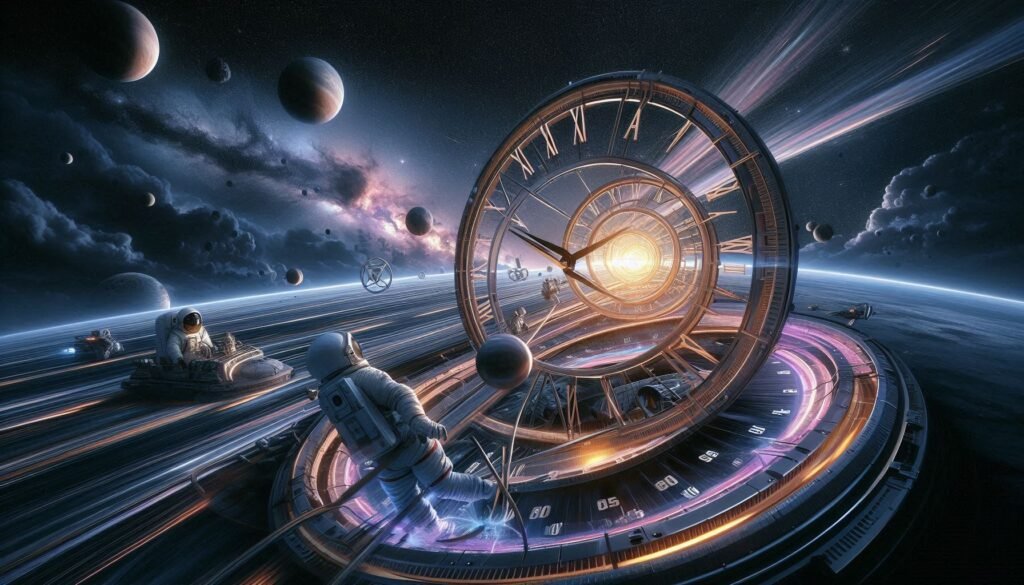Discovering mind-blowing facts is like getting a surprise party for your brain! These little nuggets of wisdom can flip your perspective upside down and make you see the world in a whole new light. Take this gem, for example: there are more stars in the universe than grains of sand on all the beaches on Earth. Yep, that’s right! So next time you’re at the beach, just remember you’re basically standing in a cosmic sandbox.
And here’s another zinger: a single teaspoon of honey represents the life’s work of twelve bees. Twelve! Talk about teamwork making the dream work. It really makes you appreciate those buzzing little buddies and their sweet contributions.
When you stumble upon these jaw-dropping facts, they make you question everything you thought you knew and push you to learn more. It’s like opening up Pandora’s box—but with less chaos and more “Whoa!” moments. Embrace these revelations, let them blow your mind wide open, and you’ll find yourself navigating life with curiosity, humility, and an endless sense of wonder.
The Universe is Expanding Faster Than the Speed of Light
Cosmic inflation is a groundbreaking concept that has revolutionized our understanding of the universe’s origins and its vast expanse. Imagine the universe as a balloon being blown up; cosmic inflation suggests that, in the tiniest fraction of a second after the Big Bang, this “balloon” expanded at an incredible rate—faster than the speed of light. This rapid expansion, known as cosmic inflation, set the stage for everything we observe in space and time today.
One might wonder how something can expand faster than light, given that nothing can travel faster than light in space. The key here is that it’s not objects moving through space at these speeds but rather space itself expanding. This distinction helps us grasp how vast regions of the universe could have formed almost instantaneously.

Understanding cosmic inflation has profound implications for our comprehension of space and time. It provides answers to some perplexing questions: Why does the universe appear so uniform on a large scale? How did galaxies form from initial fluctuations? Cosmic inflation smooths out any irregularities and sets the initial conditions for galaxy formation, explaining why distant parts of our universe look remarkably similar despite being separated by billions of light-years.
In summary, cosmic inflation is not just an abstract theory; it’s a crucial piece in solving many cosmic puzzles. By recognizing its role in universe expansion and its effects on space and time, we gain invaluable insights into the very fabric of reality itself.
There Are More Possible Iterations of a Game of Chess Than Atoms in the Known Universe
The immense complexity of chess is often likened to the vastness of the universe, creating a striking parallel between a strategic board game and the cosmos. Just as the universe contains an almost unimaginable number of atoms, each contributing to its intricate structure, chess offers an astounding array of game possibilities that can boggle even the most adept minds. The number of potential moves in a single chess match surpasses the total number of atoms in our known universe, illustrating both the depth and breadth of this ancient game.

Each move on the chessboard opens up new pathways and strategies, much like how every cosmic event can alter the course of celestial bodies and phenomena. This comparison underscores not only the intellectual challenge that chess presents but also its ability to mimic life’s unpredictability and complexity on a smaller scale. By understanding chess’s profound intricacies, one gains a deeper appreciation for both human ingenuity and the boundless mysteries that define our universe.
The Majority of Our Universe is Made Up of Dark Matter and Dark Energy
The universe is a vast and enigmatic expanse, and despite centuries of astronomical research, we still grapple with its most profound mysteries. Chief among these are dark matter and dark energy, which together constitute approximately 95% of the universe’s total composition. This staggering fact begs the question: what exactly are these elusive entities?
Dark matter, though invisible to our telescopes, exerts a gravitational pull that influences the motion of galaxies and clusters. Without it, the very structure of our cosmos would be drastically different. Unlike ordinary matter that makes up stars, planets, and everything we see around us, dark matter does not emit or absorb light; its presence is inferred through gravitational effects.

Equally baffling is dark energy—a mysterious force driving the accelerated expansion of the universe. Discovered in the late 20th century through observations of distant supernovae, dark energy appears to counteract gravity on cosmological scales. Its nature remains one of science’s greatest puzzles.
Understanding these components isn’t just an academic exercise; it’s crucial for comprehending our place in the cosmos. As researchers delve deeper into this cosmic mystery using advanced technologies and innovative theories, each discovery brings us closer to unraveling how our universe truly operates.
In essence, exploring dark matter and dark energy isn’t just about filling gaps in our knowledge—it’s about piecing together a grander picture of existence itself. The quest continues to illuminate these unseen forces that shape reality as we know it.
Octopuses Have Three Hearts and Blue Blood
The unique anatomy of octopuses sets them apart as one of the most fascinating and intelligent creatures in the marine world. Octopuses possess three hearts, a feature that enhances their ability to circulate blood efficiently throughout their bodies. This blue blood, rich in copper-based hemocyanin, allows them to thrive in low-oxygen environments where other animals might struggle.

Beyond their intriguing physiology, octopuses are renowned for their remarkable intelligence; they can solve complex puzzles, exhibit impressive memory recall, and even demonstrate playful behavior. Their adaptability further underscores their evolutionary success; octopuses can change color and texture to blend seamlessly into their surroundings, making them masterful escape artists and hunters. By exploring these incredible traits, we gain a deeper appreciation for how octopuses navigate and survive in the vast ocean depths with such unparalleled skill and ingenuity.
Time Passes Differently in Space
Time dilation, a fascinating consequence of Einstein’s theory of relativity, has profound implications for astronauts and space travel. At its core, time dilation refers to the phenomenon where time passes at different rates for observers in different frames of reference. This effect becomes particularly pronounced when dealing with high velocities close to the speed of light or strong gravitational fields.
For astronauts traveling at significant fractions of the speed of light, time aboard their spacecraft would pass much slower compared to those remaining on Earth. Imagine an astronaut embarking on a journey to a distant star system at near-light speeds; while only a few years might elapse for them during their voyage, decades or even centuries could pass on Earth. This means that upon returning home, they would find themselves in a future world vastly different from the one they left behind.

The implications for space travel are both thrilling and daunting. On one hand, time dilation offers the possibility of exploring far-off regions of our galaxy within an astronaut’s lifetime. On the other hand, it presents unique challenges in terms of mission planning and the psychological impacts on astronauts knowing they might outlive everyone they once knew.
Understanding and leveraging time dilation is crucial as humanity sets its sights on interstellar exploration. It not only reshapes our approach to long-duration missions but also expands our horizons about what is possible in space travel. As we continue to push the boundaries of our technological capabilities, mastering these relativistic effects will be key to unlocking new frontiers beyond our solar system.
We Are All Made of Stardust
The elements that make up our bodies have an astonishing origin: they were forged in the hearts of stars. This connection to the cosmos is not just poetic; it is a scientific fact that highlights our deep relationship with the universe. When stars go supernova, they scatter elements such as carbon, oxygen, and nitrogen across space, which eventually come together to form new stars, planets, and even life itself. The very building blocks of our existence—our bones, muscles, and blood—are made from stardust created in these celestial furnaces billions of years ago.

Understanding this cosmic connection can profoundly change how we perceive ourselves and our place in the universe. It reminds us that we are not just inhabitants of Earth but are intrinsically linked to the vast expanse of space. This realization can inspire a greater sense of unity among humanity and a deeper appreciation for the wonders of science and nature.
The Brain Processes Information Faster Than a Supercomputer
The human brain’s processing power is often compared to that of modern supercomputers, yet it stands out remarkably in terms of efficiency. While supercomputers can perform billions of calculations per second and handle vast amounts of data, they require immense energy and sophisticated cooling systems to operate. In contrast, the human brain processes information at incredible speeds using only about 20 watts of power—equivalent to a small light bulb. This efficiency arises from the brain’s complex network of neurons and synapses, which work seamlessly to manage tasks ranging from basic motor functions to advanced cognitive processes.

Unlike supercomputers that execute programmed instructions, the human brain adapts and learns continuously, demonstrating a level of flexibility and creativity that machines have yet to achieve. By emphasizing these differences, it becomes clear that while supercomputers excel in raw computational power, the human brain remains unmatched in its efficient use of energy and its ability to process information in versatile ways.
Only 1% of the Ocean Has Been Explored
The vast unexplored territories of our oceans present an incredible opportunity for new discoveries and invaluable insights. Despite the advancements in technology and exploration, a significant portion of our oceans remains uncharted, teeming with underwater mysteries waiting to be unveiled. Ocean exploration has the potential to reveal unknown marine species, unique ecosystems, and even historical artifacts that have been hidden beneath the waves for centuries.

By delving into these unexplored ocean depths, we can enhance our understanding of marine biology and ecology, which is crucial for preserving aquatic life and addressing environmental challenges. Moreover, these marine discoveries could lead to groundbreaking innovations in medicine, biotechnology, and sustainable resources. The uncharted realms of our oceans hold immense promise; investing in their exploration not only satisfies human curiosity but also offers tangible benefits that could transform our knowledge and capabilities.
Bananas Are Berries, but Strawberries Aren’t
Understanding the botanical definitions of fruits can reveal surprising facts about the foods we eat every day. For instance, did you know that bananas are classified as berries while strawberries are not? According to botanical definitions, a berry is a fruit produced from the ovary of a single flower with seeds embedded in the flesh. This means that bananas, along with tomatoes and kiwis, fit the definition perfectly.

On the other hand, strawberries do not meet this criterion because their seeds are on the outside and they develop from multiple ovaries. These surprising classifications challenge our common perceptions and demonstrate how scientific definitions can differ markedly from everyday usage. By exploring these botanical facts, we gain a deeper appreciation for the complexity and diversity of fruits in our diet, enriching our understanding of nature’s bounty in unexpected ways.
The Earth’s Core is as Hot as the Surface of the Sun
The extreme conditions at the Earth’s core are a fascinating subject in planetary science, particularly when compared to the Sun’s surface. At the Earth’s core, temperatures soar to around 9,000 degrees Fahrenheit, which is nearly as hot as the surface of the Sun, where temperatures reach approximately 10,000 degrees Fahrenheit. Despite being vastly different in their compositions and locations within our solar system, both environments exhibit extreme heat that plays crucial roles in their respective contexts.

The Earth’s core generates immense heat due to radioactive decay and residual heat from planetary formation, which drives plate tectonics and creates a magnetic field essential for sustaining life on Earth. In contrast, the Sun’s surface heat results from nuclear fusion occurring in its core, producing energy that supports all life forms on our planet through sunlight. By understanding these intense conditions and their implications, we gain valuable insights into both planetary dynamics and stellar processes that shape our universe. This comparative analysis underscores the intricate balance of forces that govern celestial bodies and highlights how studying such extremes can illuminate fundamental aspects of science.
Conclusion
The world is brimming with mind-blowing facts that can astonish even the most well-traveled individuals. From the mysterious depths of the Mariana Trench to the breathtaking heights of Mount Everest, our planet offers a plethora of wonders waiting to be discovered. Did you know that there are more stars in the universe than grains of sand on all Earth’s beaches combined? Or that a single bolt of lightning contains enough energy to toast 100,000 slices of bread? These astonishing truths barely scratch the surface of what our world has to offer. Let your curiosity guide you and continue exploring these wonders; each new discovery enriches our understanding and appreciation of this incredible planet we call home. By delving deeper into these marvels, you’ll uncover stories and phenomena that inspire awe and ignite a lifelong passion for exploration.


















